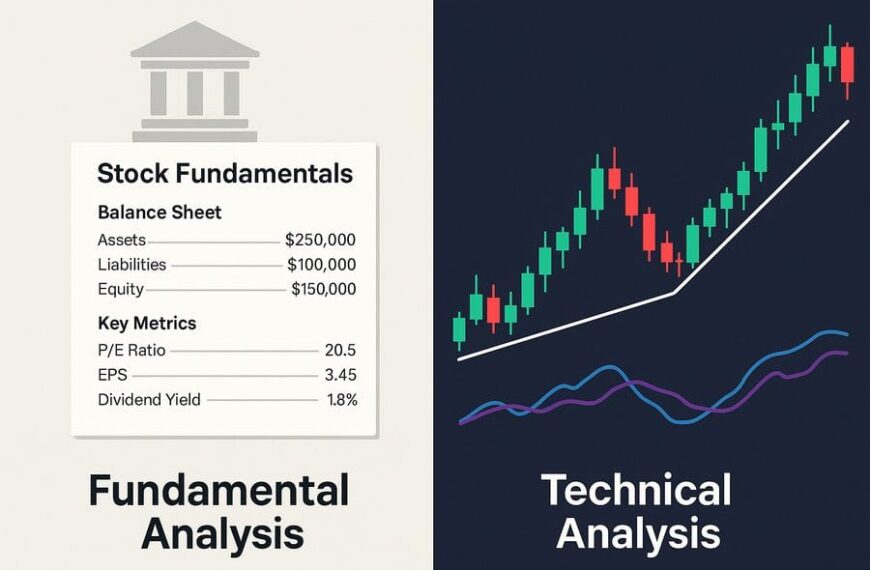Like it or not, our credit scores function as our financial reputation. In fact, chances are good that multiple credit reports were created for you soon after you were legally considered an adult. While you may know how to check these reports and even have an understanding of the factors that make up a score, you may not be aware that a noticeable boost can happen in a very short time. This guide provides steps to improve your credit score in 30 days.

Key Takeaways: Fast-Track Credit Score Improvement
- Check for errors immediately – Dispute inaccuracies on your credit report, which can boost your score by 20+ points within 30 days if errors are found and corrected
- Pay down credit card balances – Reduce credit utilization below 30% (ideally under 10%) for the most impactful score improvement
- Request credit limit increases – Ask existing creditors for higher limits to instantly lower your utilization ratio without paying down debt
- Become an authorized user – Get added to a trusted person’s well-established account to benefit from their positive payment history
- Negotiate goodwill adjustments – Contact creditors to remove late payments as a courtesy, potentially removing negative marks from your report
- Pay off collections strategically – Use “pay for delete” negotiations to remove collection accounts entirely from your credit report
- Avoid new credit applications – Skip hard inquiries during your 30-day improvement period to prevent temporary score drops
Dramatic credit increases typically require longer timeframes, but if you’re preparing for a mortgage application or other major purchase and your scores are teetering on the edge of a higher credit tier, it’s time for strategic, targeted actions.
- Understanding Credit Score Fundamentals
- Check Your Credit Report for Errors
- Pay Down Credit Card Balances
- Request Credit Limit Increases
- Become an Authorized User
- Negotiate with Creditors for Goodwill Adjustments
- Pay Off Collection Accounts Strategically
- Use Experian Boost or Similar Services
- Avoid New Hard Inquiries and Credit Applications
- Keep Old Accounts Open
- Frequently Asked Questions
- Conclusion: Your 30-Day Credit Improvement Plan
Understanding Credit Score Fundamentals
Before attempting to improve your credit score, it’s essential to understand what factors influence it. Your FICO score, the most commonly used credit scoring model, breaks down into five primary components:
- Payment History (35%): Your track record of on-time payments
- Credit Utilization (30%): The percentage of available credit you’re using
- Length of Credit History (15%): How long you’ve had credit accounts
- Credit Mix (10%): The variety of credit accounts you manage
- New Credit (10%): Recently opened accounts and credit inquiries
Your credit score can range from 300 to 850, with scores above 670 generally considered good. Understanding this framework helps target your improvement efforts where they’ll have the greatest impact. Since payment history and credit utilization together make up 65% of your score, these areas often provide the quickest path to improvement.
When attempting to improve your credit score in 30 days, focusing on factors that can change quickly is key. While payment history is important, it takes time to build. Credit utilization, however, can change as soon as your creditors report to the bureaus—which typically happens monthly.
Check Your Credit Report for Errors
One of the fastest ways to potentially improve your credit score is to identify and dispute errors on your credit report. According to the Federal Trade Commission, about one in five Americans have an error on their credit reports that might affect their scores.
Start by obtaining free copies of your credit reports from all three major bureaus (Experian, Equifax, and TransUnion) through AnnualCreditReport.com. Carefully review each report for inaccuracies such as:
- Accounts that don’t belong to you
- Late payments incorrectly reported
- Incorrect account balances or credit limits
- Accounts showing as open when they’ve been closed
- The same debt listed multiple times
- Outdated information that should have fallen off your report
If you find errors, file a dispute directly with each credit bureau reporting the incorrect information. The bureau must investigate within 30 days and remove information that cannot be verified. Successfully removing negative errors can result in an immediate score increase once the correction is processed and reported.
While waiting for disputes to resolve, document everything and follow up diligently. The credit bureaus must respond to your dispute within 30 days, though complex issues might take longer. This step alone can sometimes raise a credit score by 20 points or more if significant errors are corrected.
Pay Down Credit Card Balances
Credit utilization—the percentage of your available credit that you’re using—has a substantial impact on your credit score and can be improved quickly. Aim to get your utilization below 30%, with under 10% being ideal for the best scores.
For example, if you have a credit card with a $10,000 limit and a $7,000 balance, your utilization ratio is 70%. Reducing that balance to $3,000 would bring your utilization down to 30%, potentially raising your score significantly within the next reporting cycle. The total credit utilization of all of your cards as well as that of individual cards is taken into account.
Ways to quickly lower your credit utilization include:
- Transferring part of the debt from cards with a high utilization ratio to cards with a lower utilization ratio
- Using tax refunds, bonuses, or other windfalls to pay down balances
- Focusing on cards with the highest utilization rates first
For maximum impact, time your payments strategically. Find out when your credit card companies report to the credit bureaus (often on your statement closing date, not the due date), and make sure your balance is low before that date.
Remember that even if you pay your balance in full each month, if your statement closes with a high balance, that’s what gets reported to the bureaus. Making a payment before the statement closing date can ensure a lower utilization ratio is reported.
Note that having a zero balance at the time it is reported to the bureaus can actually lower your score slightly, so don’t pay them off completely. Having a balance of even a single dollar will help. This may seem counterintuitive, but it’s how credit reporting agencies determine that you are using credit actively as well as responsibly.
Request Credit Limit Increases
Another effective way to reduce your credit utilization ratio is to increase your available credit. Contact your current credit card issuers and request a credit limit increase. If you’ve been a responsible customer with a good payment history, many issuers will approve these requests.
When requesting higher limits:
- Have your current income and employment information ready
- Specify the credit limit you’d like
- Emphasize your good payment history and loyalty as a customer
Most importantly, ask whether the credit limit increase request will trigger a hard inquiry on your credit report. Some issuers perform only a soft pull for existing customers, which won’t affect your score. If a hard inquiry is required, weigh the temporary negative impact (typically 5-10 points) against the potential benefit of lower utilization.
Once approved for higher limits, avoid the temptation to spend more. The goal is to decrease your utilization percentage, not increase your debt.
Become an Authorized User
If you have a trusted friend or family member with excellent credit, ask if they would add you as an authorized user on one of their credit card accounts. This strategy, sometimes called “piggybacking,” can help you benefit from their positive payment history.
When you become an authorized user, the account often appears on your credit report, and its payment history, length of credit, and utilization can all impact your score. For the best results:
- Choose someone with a long-standing account (improving your length of credit history)
- Ensure they have low utilization and perfect payment history
- Verify with the credit card issuer that they report authorized users to the credit bureaus (not all do)
- Confirm whether you’ll receive a physical card (you don’t necessarily need to use it)
The impact can be significant, especially if you have a thin credit file. Some people see score increases of 30 points or more within a month of being added as an authorized user to a well-established account.
Negotiate with Creditors for Goodwill Adjustments
If you have late payments in your history but have been a good customer otherwise, consider asking your creditors for a “goodwill adjustment”—essentially requesting that they remove the negative mark as a courtesy.
Write a goodwill letter explaining:
- Your history with the company
- Why the late payment occurred (especially if due to unusual circumstances)
- Your otherwise consistent payment record
- What steps you’ve taken to ensure it won’t happen again
While creditors aren’t obligated to remove accurate information, many will consider goodwill adjustments for otherwise reliable customers. A successful goodwill adjustment removing a late payment could raise your score significantly, especially if the late payment is recent.
This approach works best with creditors where you’ve had a long, positive relationship. Be polite, specific, and straightforward in your request, addressing it to the customer service department or executive office.
Pay Off Collection Accounts Strategically
Collection accounts significantly damage your credit score. However, in newer credit scoring models like FICO 9 and VantageScore 4.0, paid collections have less impact than unpaid ones.
If you have the means to pay off collection accounts, consider using the “pay for delete” strategy—negotiating with collection agencies to remove the account from your credit report in exchange for payment. While collectors aren’t required to agree to this, many will.
Steps to negotiate effectively:
- Get everything in writing before making payment
- Start with a settlement offer below the full amount
- Explicitly request complete removal from your credit report, not just marking it “paid”
- Send payment only after receiving the agreement in writing
Even without deletion, paying collections can help your score, particularly with newer scoring models. Additionally, some mortgage lenders require that collections be paid or settled before approving loans, regardless of credit score.
Use Experian Boost or Similar Services
Credit reporting services have developed products that allow you to get credit for bills not traditionally reported. Experian Boost, for example, lets you add utility payments, phone bills, and even streaming services to your Experian credit report.
While these services only affect one bureau’s report (Experian Boost only impacts your Experian score), they can provide a quick bump to your credit score. Some users report increases of 10-15 points within days of setting up the service.
To maximize the benefit:
- Connect accounts with the longest positive payment history
- Include multiple eligible accounts
- Remember that it only affects your Experian score, not Equifax or TransUnion
Similar services exist, such as UltraFICO, which incorporates banking data like account balances and transaction history into your score calculation. These alternative data sources can be particularly helpful if you have a limited credit history.
Avoid New Hard Inquiries and Credit Applications
When trying to improve your score quickly, avoid actions that create hard inquiries on your credit report. Each hard inquiry can lower your score by up to 10 points and stays on your report for two years.
Activities that typically generate hard inquiries include:
- Applying for new credit cards
- Auto loan applications
- Mortgage applications
- Personal loan applications
- Some apartment rental applications
- Certain utility service requests
If you need to comparison shop for a loan, try to do all applications within a 14-45 day window (depending on the scoring model). Credit scoring models typically count multiple inquiries for the same type of loan within this timeframe as a single inquiry.
Instead of applying for new traditional credit, consider credit-builder products that don’t require a hard inquiry, such as secured credit cards or credit-builder loans from community banks or credit unions.
Keep Old Accounts Open
The length of your credit history accounts for about 15% of your FICO score. Even if you’re not using older credit cards, keeping them open maintains your average age of accounts.
If you’re tempted to close unused accounts:
- Consider keeping the card active with a small recurring charge that you pay off immediately
- If annual fees are an issue, ask the issuer about downgrading to a no-fee version instead of closing
- Store the card securely if you don’t plan to carry it
Closing a credit card can also increase your overall credit utilization ratio by reducing your total available credit. This double impact—decreasing your length of credit history and increasing utilization—can cause a significant score drop.
For accounts already closed, they will continue to appear on your credit report and factor into your score for up to 10 years if the account was in good standing.
Frequently Asked Questions
Is 650 a good credit score?
A 650 credit score falls into the “fair” category. While not considered poor, it’s below the “good” threshold that typically starts at 670. With a 650 score, you’ll likely qualify for most credit products but at less favorable interest rates than those with higher scores.
How fast can I add 100 points to my credit score?
Adding 100 points to your credit score typically takes several months to a year of consistent positive credit behavior. However, if you’re starting with a very low score due to specific negative items, removing these through successful disputes or debt payoffs could potentially add 100 points more quickly.
Is a 700 credit score good?
Yes, a 700 credit score is considered good. It falls into the “good” range on the FICO scale (670-739) and qualifies you for most financial products at competitive, though not necessarily the best, interest rates.
How do I rebuild my credit ASAP?
To rebuild credit as quickly as possible, focus on paying all bills on time, reducing credit card balances below 30% of limits, becoming an authorized user on someone else’s well-established account, and disputing any errors on your credit report.
Is Experian Boost worth it?
Experian Boost can be worth it if you have limited credit history or need a quick boost to your Experian score specifically. The service is free and has helped many users increase their scores by counting previously unreported bill payments. However, it only affects your Experian score, not Equifax or TransUnion.
What is a poor credit score?
A poor credit score is generally considered to be below 580 on the FICO scale. Scores in this range make it difficult to qualify for traditional credit products, and when approval is possible, interest rates are typically much higher.
Can your credit score go up 50 points in a month?
Yes, it’s possible for your credit score to increase by 50 points in a month, especially if you’re starting from a lower score and take multiple impactful actions simultaneously, such as paying down high balances, removing errors, or being added as an authorized user to a well-established account.
Conclusion: Your 30-Day Credit Improvement Plan
Improving your credit score in 30 days requires focused, strategic action. While there are no guarantees about specific point increases, following these steps gives you the best chance for meaningful improvement:
- Pull all three credit reports and dispute any errors immediately.
- Pay down credit card balances as much as possible.
- Transfer debt from high utilization cards to low utilization cards.
- Request credit limit increases on existing accounts.
- Contact creditors about goodwill adjustments for past late payments.
- Negotiate with collection agencies for pay-for-delete arrangements if applicable.
- Set up Experian Boost or similar services.
- Ensure all monthly payments are made on time.
- Check that credit utilization remains low before statement closing dates.
Remember that credit improvement is both a sprint and a marathon. These strategies can help create meaningful improvement in 30 days, but continuing these good habits will lead to even more significant improvements over time.
By understanding how credit scores work and taking deliberate steps to address the most influential factors, you’re not just working toward a number—you’re building better financial habits that will serve you well throughout your life.




